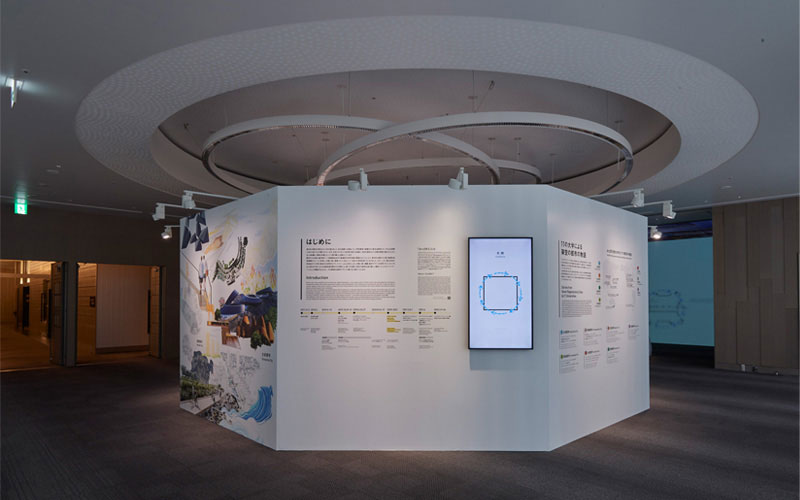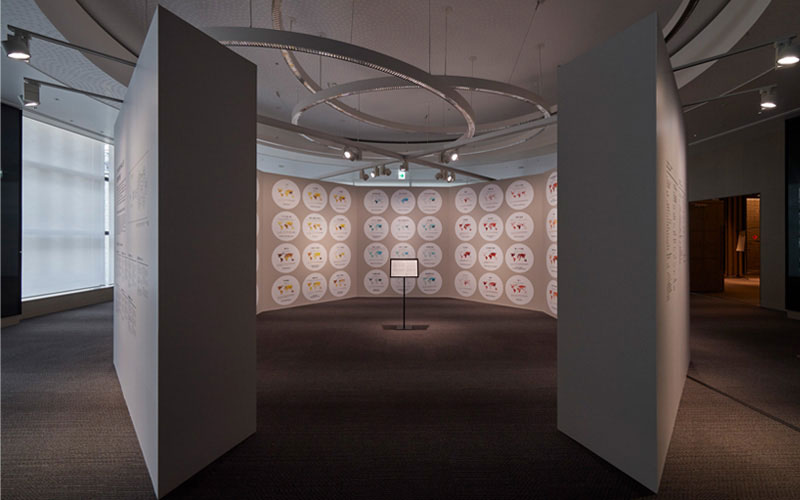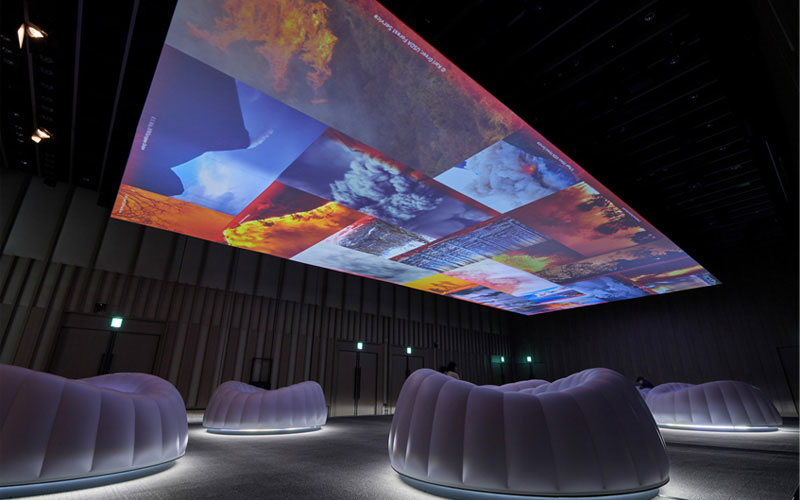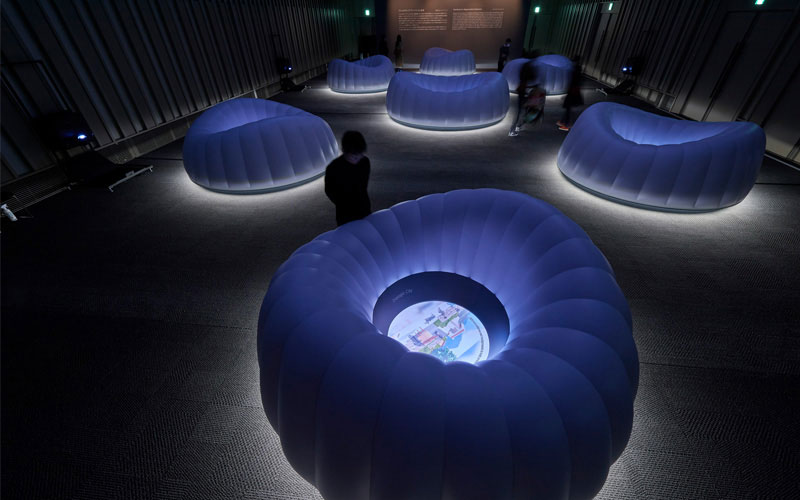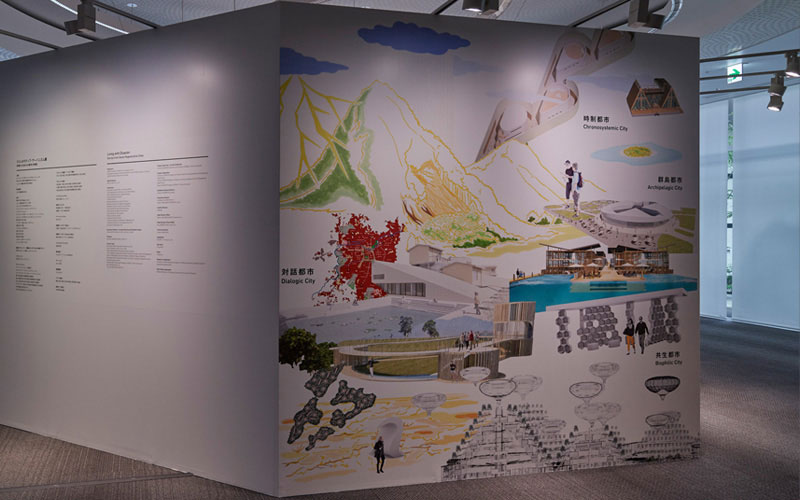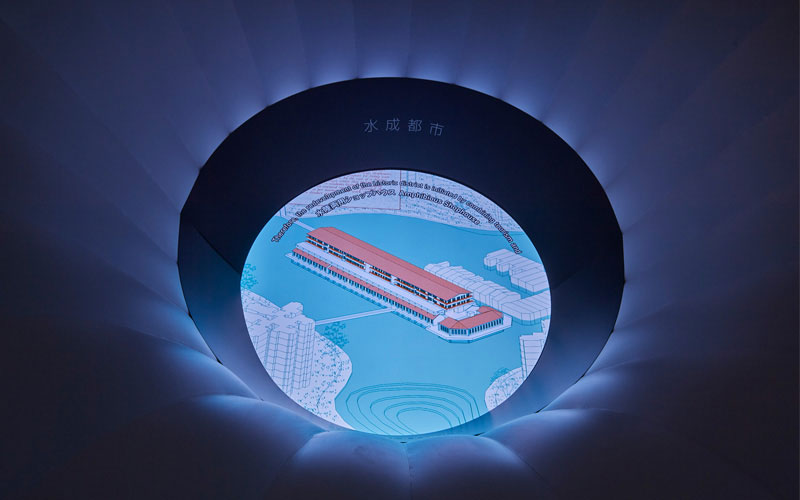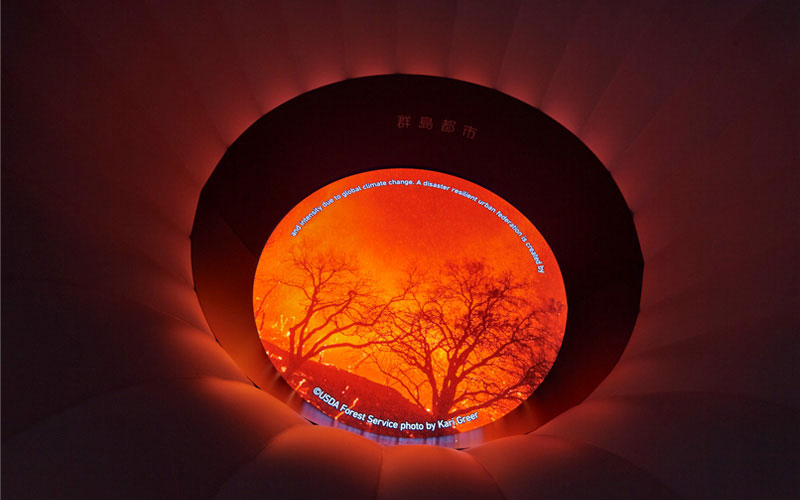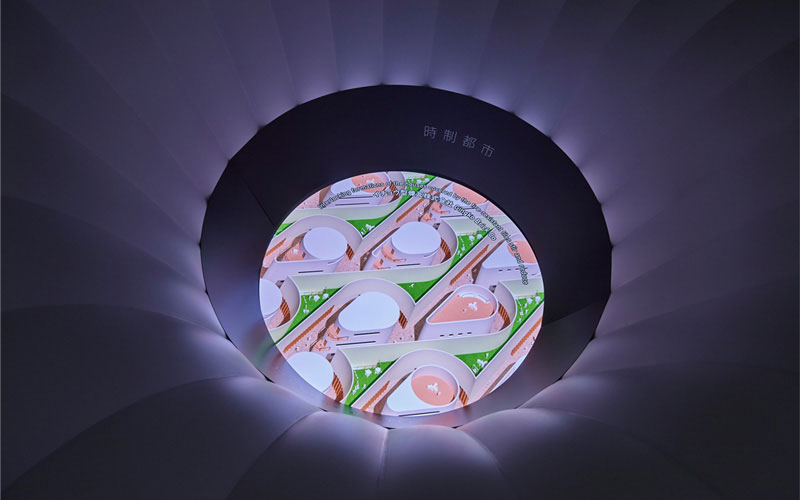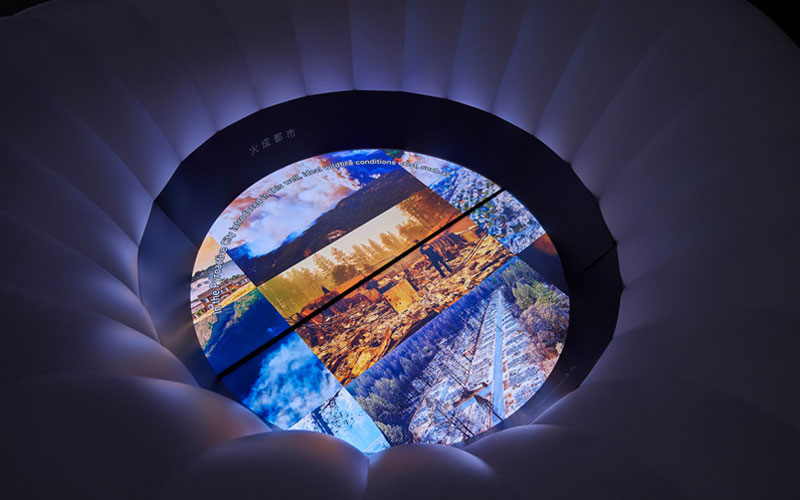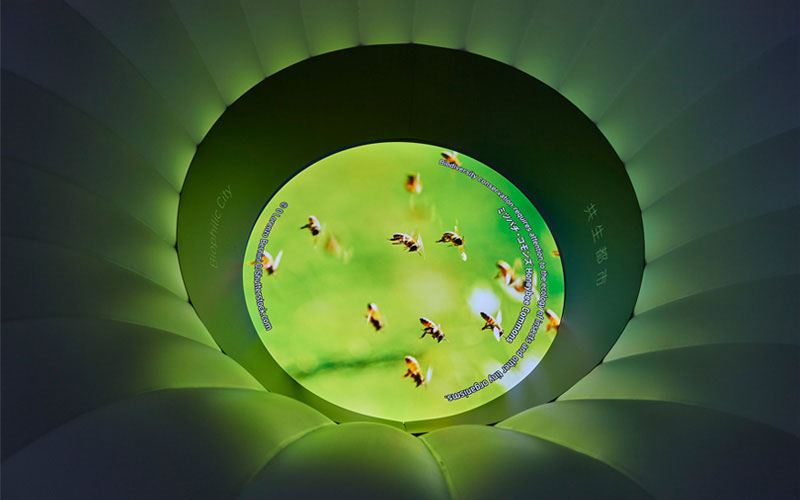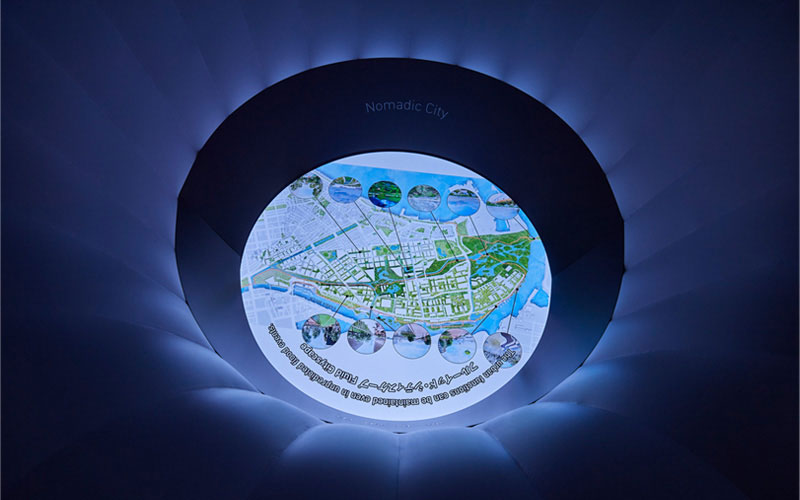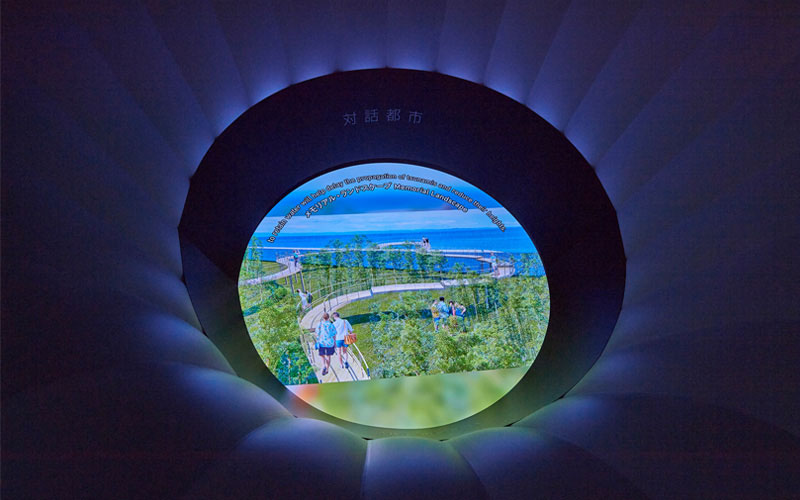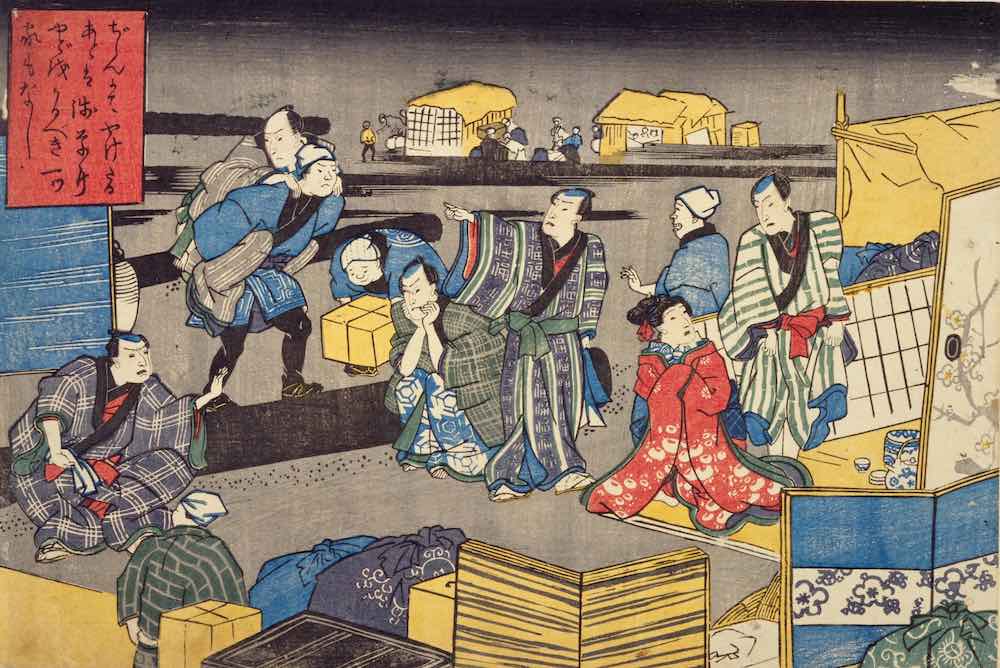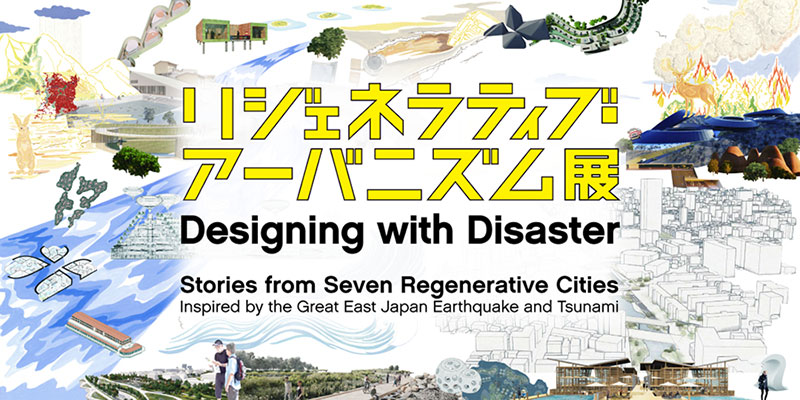
- Dates
01.27.2023 (Fri.) – 04.02.2023 (Sun.)
- Hours
Mon. – Fri. | 11:00 AM – 7:00 PM (PDT)
Sat. – Sun. | 11:00 AM – 8:00 PM (PDT)
- Location
JAPAN HOUSE Gallery, Level 2
- Fee
Free
The exhibition Designing with Disaster introduces the concept of “Regenerative Urbanism” – an anticipatory approach to urban design that explores the optimistic possibility of symbioses between humans and the natural and constructed worlds, embracing inevitable disasters and creating disaster-resilient environments.
In response to the Great East Japan Earthquake of 2011, the United Nations World Conference on Disaster Reduction was held in Sendai, Miyagi prefecture, the closest major city to the earthquake’s epicenter in the Tohoku region. This conference drafted the Sendai Framework for Disaster Risk Reduction 2015-2030 which outlined targets and priorities for action to prevent new and reduce existing disaster risks worldwide. Based on the Sendai Framework, UCLA xLAB (University of California, Los Angeles) and Tohoku University’s IRIDeS (International Research Institute of Disaster Science) collaborated with 11 Pacific Rim universities on a new initiative named ArcDR3 (Architecture and Urban Design for Disaster Risk Reduction and Resilience). Design studios linked to research at each university have been exploring ways to respond to disasters and build new disaster-resilient environments around the world. This exhibition presents exciting proposals for Seven Regenerative Cities inspired by that exploration.
JAPAN HOUSE Los Angeles is pleased to share this forward-thinking collection of urban design strategies and partner with an international coalition of contributors for this exhibition. These efforts inspired by the resiliency of the Tohoku people, and led by Japanese scholars, architects, and designers in the realms of disaster prevention and proactive planning, highlight the positive ideas and energy that can evolve from the aftermath of a nature instigated disaster. We hope that this work can become a valuable guide for the larger global community and be utilized to mitigate the unique disaster potentialities that exist wherever our visitors reside.
Welcome Video | Professor Hitoshi Abe
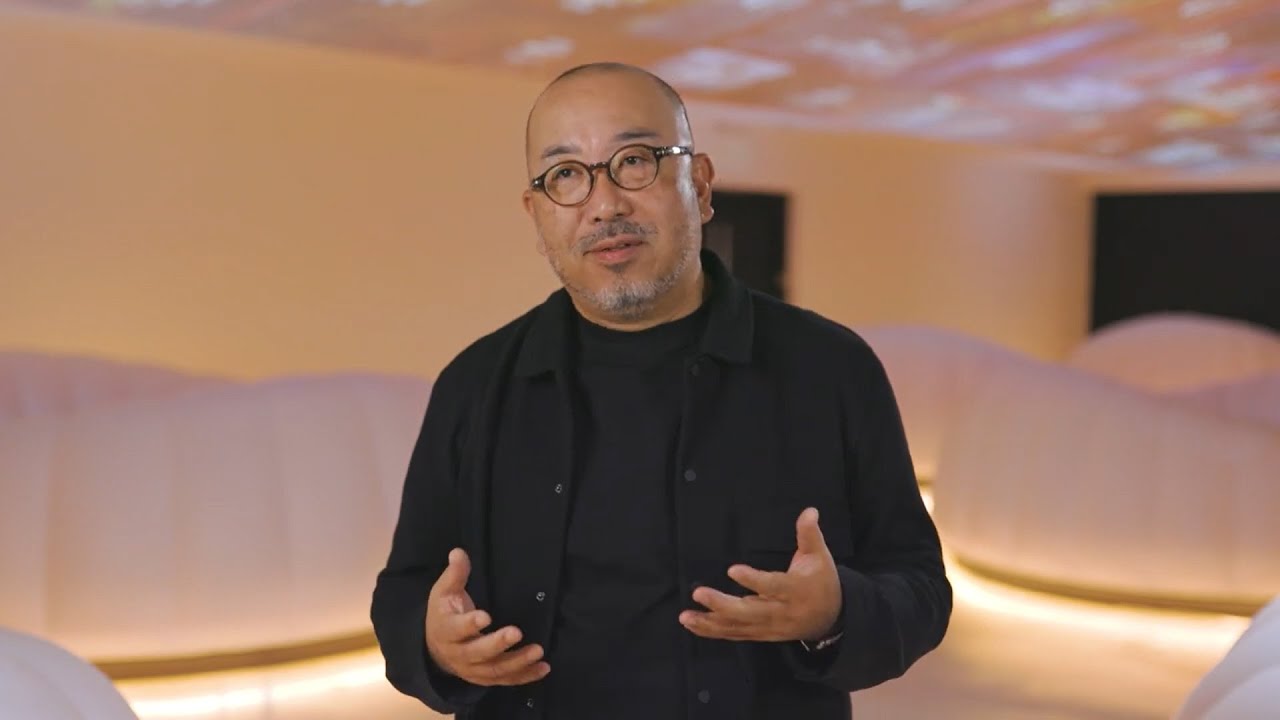
*To watch the video in full screen, please click on the image above, then click on the YouTube icon on the lower right-hand corner.
Explore the Exhibition
The Designing with Disaster exhibition is comprised of four main components: An Introductory Wall, the Pillars, the Cloud (Projection), and the Regenerative City Wells. The Introductory Wall describes the activities of the ArcDR3 Initiative, highlighting the concept of Regenerative Urbanism, and responds to the question: What can we do to nurture a culture of living with disasters and build a city that is resilient and regenerative? The Pillars encompass an area for visitors to contemplate their relationship with the Earth and use statistical data to better understand and care for areas in crisis. The Cloud expands over the exhibition gallery with projected images and data describing humanity’s need to coexist with environmental risks. What would a regenerative city look like where people can live with disasters as part of their daily lives? Looking into eight illuminated Wells, visitors are provided with an immersive physical, video, and audio experience recounting the story of the Tohoku region’s resilience and introducing the Seven Regenerative Cities. Diverse proposals from eleven participating universities have been organized into the following seven hypothetical regenerative cities.
The video presents digital maps of the world indicating all the major earthquakes, tsunamis and forest fires that have been recorded worldwide over the last century. Interspersed between each map, a large mosaic made up of video footage and still photographs illustrates the devastation caused by earthquakes, volcanic eruptions, tsunamis, floods and droughts around the world.
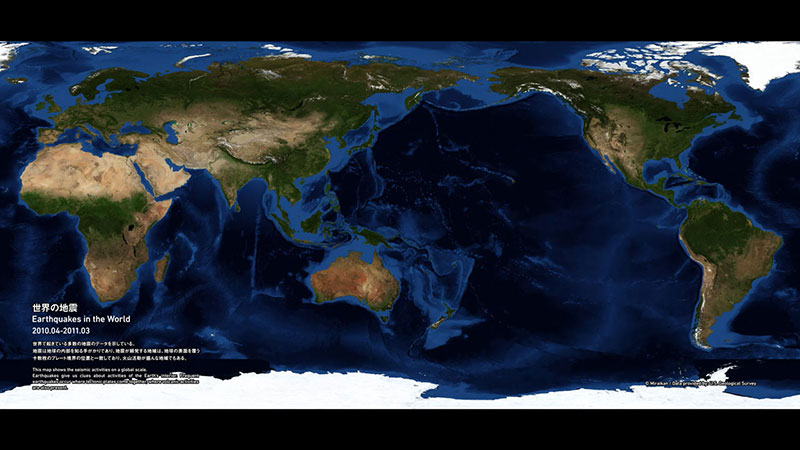
Seven Regenerative Cities
- Hydroactive City, where various mechanisms absorb, store, and distribute water to support urban life and coastal communities embrace new forms of livelihood and commerce with the nearby water
- Archipelagic City designed as multiple elevated islands of community groups protected from fire and rising tides
- Chronosystemic City with a time-based plan and design for habitation, growth, and management, where the components of the city are flexibly replaced, switched, removed, and exchanged to survive and thrive
- Pyroactive City proposes a balance between city and nature, with safe boundaries and redefined buffers to wildfire activity
- Biophilic City where natural processes are symbiotically integrated promoting cooperation between different ecosystems and plant life within the city
- Nomadic City based on mobility and flow, rather than sedentary lifestyles, so that streets, highways, and rivers can provide means of refuge and new sites of habitation
- Dialogic City emphasizing dialog between all members of the city, ensuring cultural traditions as part of urban evolution, to create a more balanced, harmonious society
The Wells
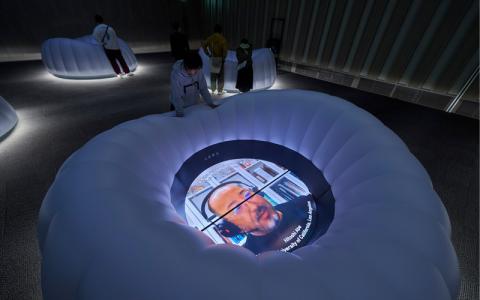
Photo by Eiji Ina
By looking into each of the Wells, visitors will be able to visualize each city through plans, animations, and interviews discussing the concepts. The visitor’s experience will transverse imagery, data, and urban proposals to explore possible scenarios of living with disasters, while examining a global perspective on the future of urban environments.
*To view the flipbook in full screen, please click on the "Fullscreen" icon on the lower right-hand corner from the window above.
About ArcDR3 Project
The exhibition Designing with Disaster is one part of the ArcDR3 project and was created and curated by Professor Hitoshi Abe of UCLA and his team at xLAB in collaboration with IRIDeS at Tohoku University in Japan. It was presented in Tokyo from April 9-24, 2022, in conjunction with a symposium attended by architects and other scholars from around the world. Participating Universities include UC Berkeley (USA), University of Hong Kong (Hong Kong), University of Melbourne (Australia), National Cheng Kung University (Taiwan), National University of Singapore (Singapore), Pontifical Catholic University of Chile (Chile), University of Tokyo (Japan), Tohoku University (Japan), Tsinghua University (China), University of Washington (USA) and UCLA (USA).
Exhibition-Related Programs
Photo by Eiji Ina
- Date
01.28.2023 (Sat.)
- Time
02:00 PM - 05:00 PM (PST)
Photo courtesy of Pixelshot
- Date
03.22.2023 (Wed.)
- Time
05:00 PM - 06:00 PM (PDT)
Reading Material
Exhibition Brochure
Download the exhibition brochure here.
Exhibition Credits
Presented by
JAPAN HOUSE Los Angeles
Organizers
xLAB, University of California, Los Angeles [UCLA]
International Research Institute of Disaster Science [IRIDeS], Tohoku University
ArcDR3 Exhibition Executive Committee
Cooperation
Association of Pacific Rim Universities [APRU]
UCLA Department of Architecture and Urban Design
UCLA Terasaki Center for Japanese Studies
UCLA International Institute
ArcDR3 Initiative
National Cheng Kung University (Taiwan)
National University of Singapore (Singapore)
Pontifical Catholic University of Chile (Chile)
The University of Hong Kong (Hong Kong)
The University of Melbourne (Australia)
The University of Tokyo (Japan)
Tohoku University (Japan)
Tsinghua University (China)
University of California Berkeley [UC Berkeley] (US)
University of California, Los Angeles [UCLA] (US)
University of Washington (US)
Supporting Sponsor
Mitsui Fudosan Co., Ltd.
Executive Producer and Concept Design
Hitoshi Abe / Professor at UCLA, Director of UCLA xLAB
Producer
Shinobu Nakanishi / IDEAL COOP Inc.
Curator Team
Mohamed Sharif / Associate Professor at UCLA
Carlo Sturken / Curator, UCLA xLAB
Yelena Pozdnyakova / Assistant Scenario Director
Tohru Horiguchi / Associate Professor at Kindai University, Faculty of Architecture
Akihiro Shibayama / Associate Professor at IRIDeS (Tohoku University)
Masashige Motoe / Associate Professor at Tohoku University, Graduate School of Engineering Department
Elizabeth Maly / Associate Professor at IRIDeS (Tohoku University)
Mao Imaizumi / Does Inc.
YoungJa Park / Office PARK Inc.
Exhibition Design
Hitoshi Abe, Josh Nelson / ATELIER HITOSHI ABE
Carlo Sturken / UCLA xLAB
Project Supervisor / Archival Materials
Fumihiko Imamura / Director and Professor at IRIDeS (Tohoku University)
Project Cooperation
Toshikazu Ishida / Professor at Tohoku University, Graduate School of Engineering Department
Yasuaki Onoda / Professor at Tohoku University, Graduate School of Engineering Department
Osamu Murao / Professor at IRIDeS (Tohoku University)
Exhibition Scenario Director
Takenori Miyamoto / Curator
Production Director
Yoshikazu Inui / BOCTOK Inc.
Hitoshi Takahashi / CROSSCO Co., Ltd.
Creative Director
ujidesign
Video Director [Wall]
Satoru Higa / BACKSPACE Production Inc.
Video Director [Cloud+Well]
Akio Okamoto / Ney-Anton G.K.
Technical Director
Hiroshi Kanechiku
Installation
HIGURE 17-15 cas Co., Ltd.
Narration
Elizabeth Ficocelli
Music
Hakobune
Research Cooperation
Yoshibumi Yanai / Assistant professor at Tohoku University, Graduate School of Engineering Department
Earth Data Cooperation
National Museum of Emerging Science and Innovation (Miraikan)
Special Thanks
Mitsui Fudosan Co., Ltd.
Media Sponsor


